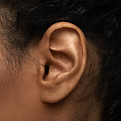Ear Wax Removal
The demand for ear and hearing healthcare services is growing rapidly due to an ever increasing ageing population, exposure to loud noises such as music and machinery, the increased use of headphones and even the way that we clean our ears using cotton ear buds has an adverse effect to our daily lives. The current patient pathway to ear and hearing healthcare can be both disjointed and relatively inaccessible. Many patients move from appointment to appointment, spread over several weeks, if not months. The average waiting time for patients to receive treatment was 12 to 16 weeks (pre-covid), this has now grown substantially. Not only that but most GP's have alsp stopped offering wax removal as a service (BBC), which has a significant impact on access and wellbeing. Delivering ear and hearing healthcare within communities makes care more accessible for all , and helps to reduce the outpatient burden on secondary care settings, in line with the 'NHS Long Term Plan'. For younger people, hearing loss can effect their education and social life. For older people it can lead to social isolation, dementia and an increased risk of falls.
Covering Spalding, Pinchbeck, Holbeach, Boston, Bourne, Market Deeping, Peterbourgh and surrounding areas. England UK.

Why hearing matters
When our ability to hear deteriorates it requires more energy for us to listen and participate in daily life, which can lead to social isolation as people find it harder to engage with loved ones. Whilst it is common for certain people to attend routine health check-ups such as eye and teeth procedures on a regular basis, our ears are often left forgotten. This should not be the case. Hearing loss has huge social implications on our quality of life. Hearing loss, if left untreated, can lead to increased risk of falls, social isolation and is also known to be the single largest modifiable risk factor for the prevention of dementia. Not only that we are often unaware of what we cannot hear, that's way regular ear and hearing health check ups are essential.

Signs to look out for
There are a range of signs to watch out for which could indicate that you have an ear or hearing problem.
Loss of hearing; Earache; Discomfort; Discharge; Ears feeling full; ringing; Itching; Loss of balance; Dizziness; Coughing; Turning up the volume; Moving closer to those talking; Asking people to repeat themselves; Concentrating harder then normal to listen.
These can be signs that a change has occurred in your ears and your should get them checked out.

The Solution
The Tympa system is the worlds first all in one ear and hearing healthcare assessment device. It brings together three different diagnostic and treatment systems into one hand held portable system. The Tympa allows you to perform high definition digital otoscopy to capture HD image and video, micro suction wax removal the industry gold standard and carry out a hearing screening, all in in a single 30 minute appointment. All patients images and videos are stored in our secure cloud, making it easy to keep track of your health record. This can be quickly and easily shared, via a PDF report, should you need onward specialist treatment. Our remote review feature allows access to advice and guidance form Audiologists and ENT specialist surgeons, if a second opinion is required. The tympa system is the most advanced, comprehensive, hand held ear and hearing healthcare device and diagnosis platform available. Tympa Health clinicians are trained by expert Audiology and ENT and are officially accredited by ENT UK, The British Society of Audiology (BSA) and The British Society of Hearing Aid Audiologists' (BSHAA). No other programme in the UK offers this unique level of accreditation.

Simple Diagnosis and Treatment
During a Tympa appointment your clinician will be able to access your ears, and if wax is present, gently remove it with micro suction. Micro suction is the gold standard of wax removal and is considered safer than other methods such as irrigation. Once wax has been removed a hearing screening can be performed. this will identify whether you have a level of hearing loss. If you have an hearing loss your clinician may refer you to an audiologist for further investigation. However in many cases the initial problem could of simply been down to the presence of ear wax itself.

Key Stats
In the UK it is estimated that 2.3 million people each year have problems with ear wax sufficient to need intervention (The National Institute for Health and Care Excellence). 1 in 5 Adults in the UK alone are effected by hearing loss (Royal National Institute fir Deaf People). In 2018, 435,500 micro suction wax removal procedures took place costing on average £140 per patient (NHS Digital 2018/HES date). Hearing loss is the largest modifiable risk factor for age related dementia - responsible for over 8% of cases of dementia among older adults (WHO, world report on Hearing 2021). Hearing loss will over take diabetes and cataracts as one of the top 10 UK disease burdens by 2030 (Action Plan hearing Loss). Out of 96 million outpatient procedures performed in the NHS during 2019/20 Ear, Nose and Throat procedures were in the top 10 (Hospital Episode Statistic data 2020).


